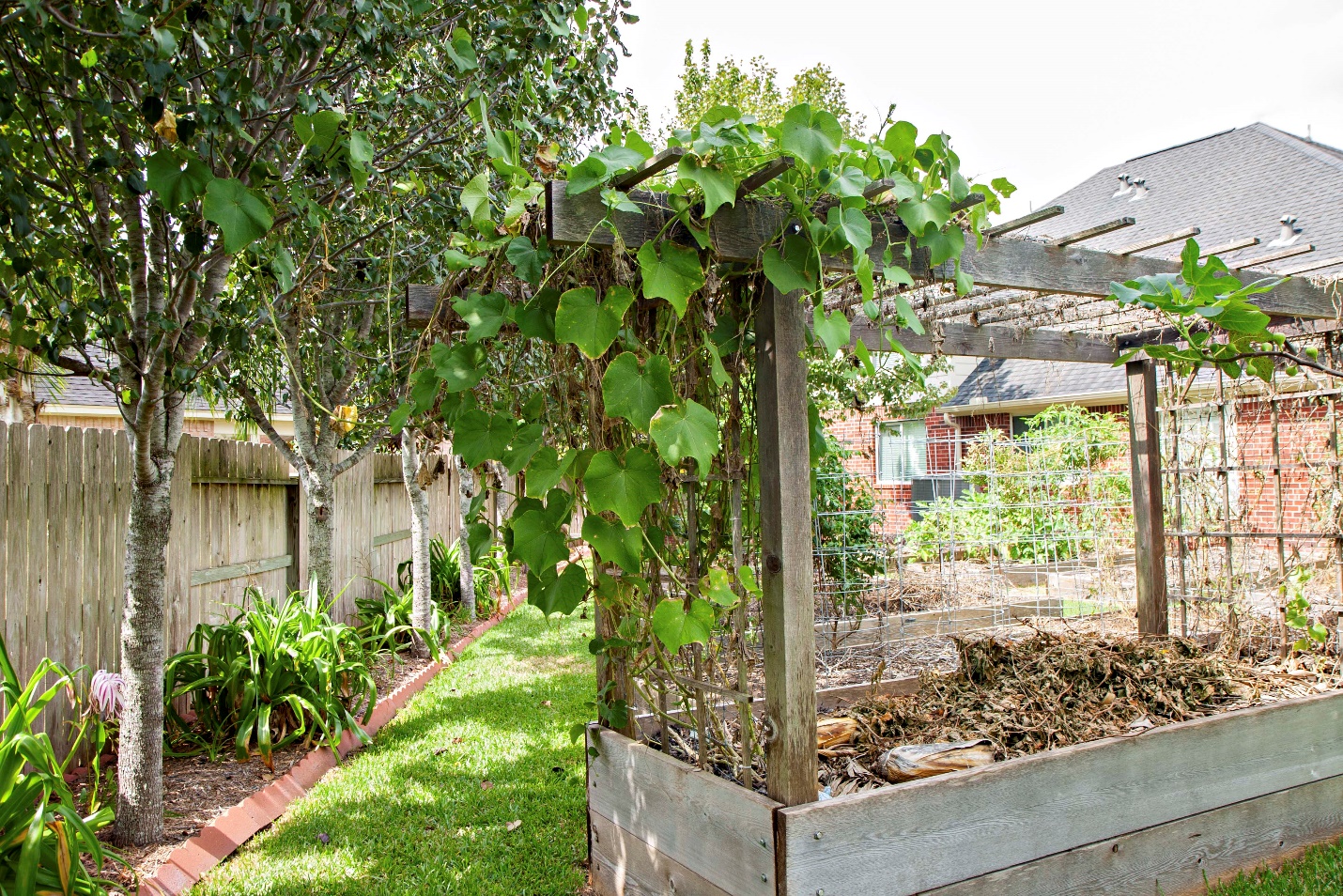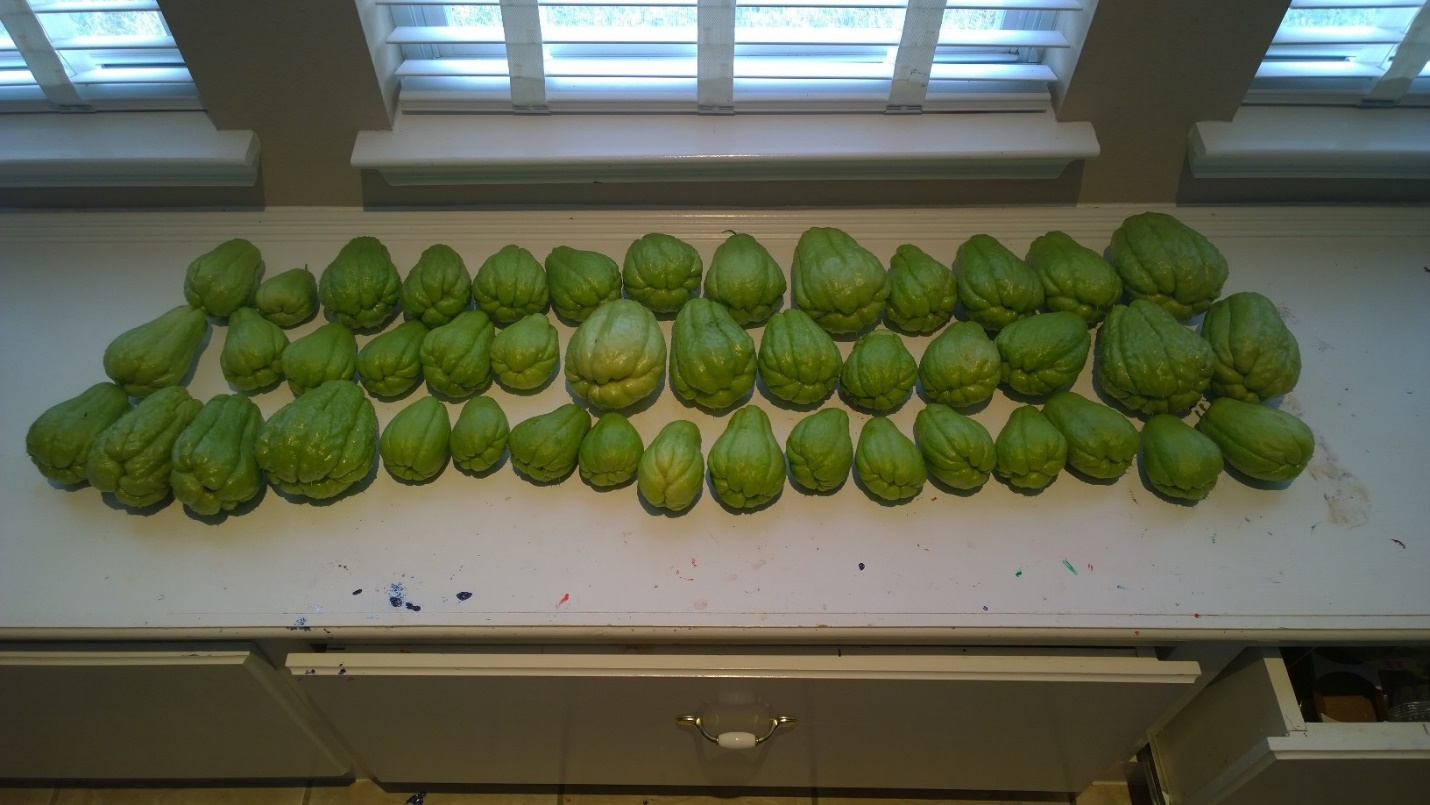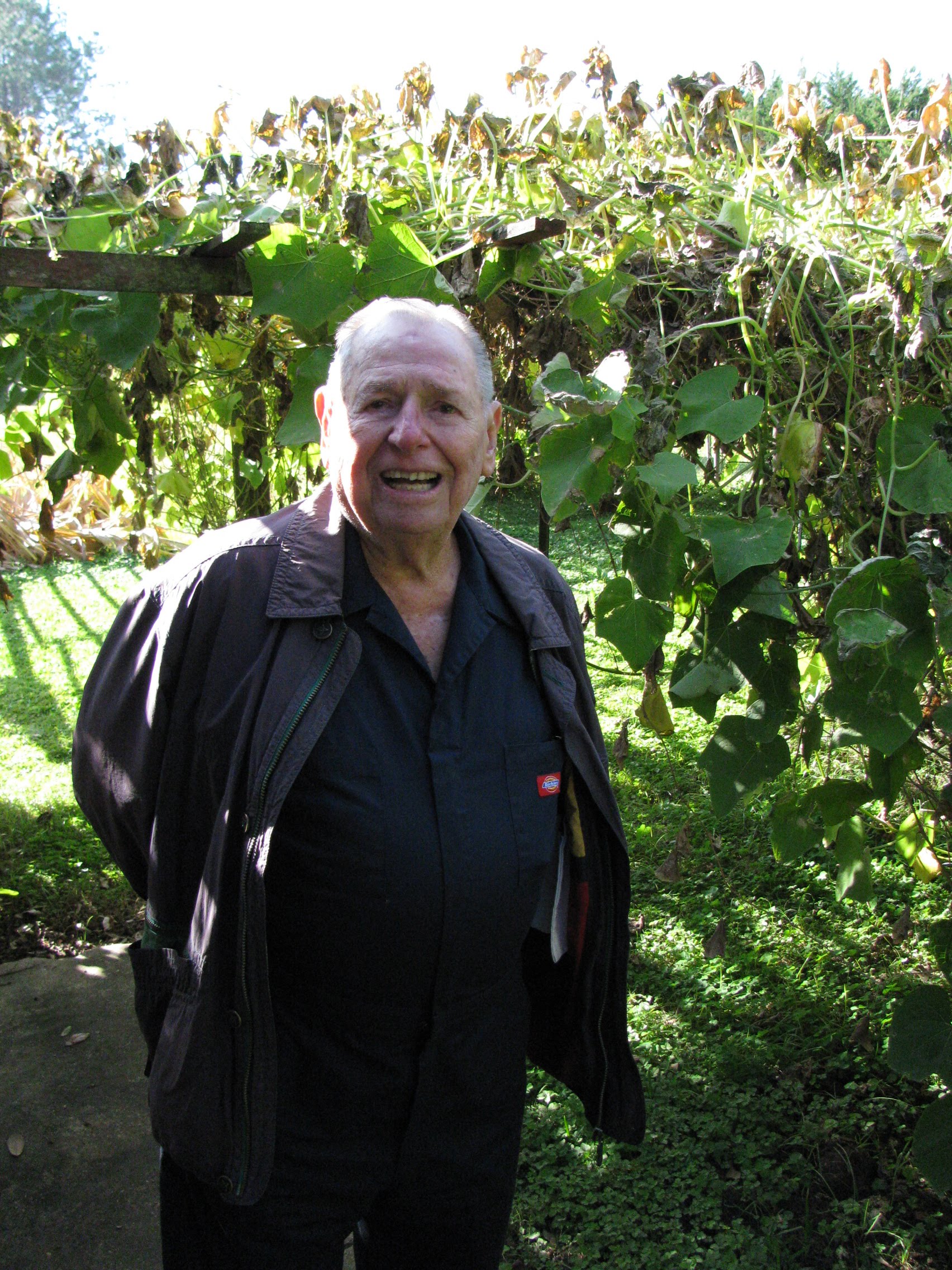Jason Fricke Saves An Endangered Heirloom Mirliton Variety in Texas
By Lance Hill
I had a long friendship with Jason Fricke of Pearland, Texas, a city within the Houston metropolitan area, in starting his project to be the first person to grow Louisiana heirloom mirlitons in Texas. Our email correspondence dates back nine years. Fricke was raised in New Orleans and moved to Houston, where he longed to expand mirliton growing to Texas. And there was a large demand for Mirlitons in Texas, do to the large migration of mirliton-loving Louisianans that occurred after the 2005 Hurricane Katrina.

Figure 1 Jason Fricke’s mirliton site in Pearland, Texas in 2014
Fricke is a persistent and thorough gardener. He read all Mirliton.Org research and listened to our recommendations. We started out encouraging him to grow mirlitons that matched his home’s climate and altitude. South Texas is similar to hot and humid coastal Louisiana; Houston is at 43 feet altitude, nearly sea-level like coastal Louisiana, and has 53 inches of annual rainfall, also comparable to Louisiana.
The first step was to provide a Louisiana heirloom mirlitons to Fricke. The most certain way to determine if a mirliton is indeed an heirloom variety is to ask the question: was the variety locally-grown or was it purchased from a store and of unknown origin? We started by giving Fricke the “James Boutte” variety from New Iberia, Louisiana that had been grown for decades by James Boutte and his son Kevin. After a few site visits to the Boutte garden in New Iberia, the elder Boutte donated several sprouts for us to place with new growers. (see the massive Boutte vine here)
We gave some of these sprouts to Fricke and after a few years of false-starts, finally in November 2014 Fricke had success, proving that mirlitons could be grown in Texas with the right variety and proper techniques. Fricke harvested 44 mirlitons of which twenty were good seed-size and were given to fellow Texans who wanted to grow them. A few were huge and reserved to expand Fricke’s garden. The smaller ones were used for Thanksgiving dinner, as is an old Louisiana tradition. The harvest was produced by four vines located in three planting spots. The diameter of the stems at the ground were 4.5”, 4.5”, 5” and 6”.

Figure 2 Fall harvest for Houston, Texas, November 2014, James Boutte heirloom mirliton variety
Originally, Fricke built a raised bed, 12″ deep and 4’x 20′ in dimensions. The problem was that the beds were not deep enough. Mirlitons don’t tolerate wide fluctuations in soil moisture content. The damping and drying-out stresses the plant and contributes to plant diseases like anthracnose. It is important that the raised bed sits on ground soil that is also well-drained. If the ground soil is soaked, the bed cannot drain properly and the raised-bed soil will also be water-logged also (bed drainage can easily be ensured by adding a perforated drain pipe to the bed, see link),
Fricke solved that problem by deepening the bed to 24”, evening out soil moisture fluctuations. He worked in sphagnum moss and used a good grade of potting soil. He placed the bed on the highest 25% of the yard, sitting on the ground soil which was a loamy clay. There was about a half-inch gap between the cedar boards and the ground soil so the whole bed was slightly raised above ground level. The bed was covered by a horizontal goat-fence trellis about 5′ above the bed.
When Fricke began growing mirlitons in 2011 he also planted cucuzza in the same bed. We advised him against growing any other cucurbit is the same garden. Cucuzza, cucumbers and other garden cucurbits are hybridized for resistance to plant fungi; that means that they can host the anthracnose fungi and while the fungus won’t kill the hybridized plants, the plants act as a sporelator spreading spores that can infect the mirliton. I have observed that successful mirliton growers grow only mirlitons and no other cucurbits to avoid this problem. Fricke removed the cucuzza and cleared the way for a healthier environment.
Fricke also began to increase his odds of success by planting multiple sprouts. It is very hard to get one or two mirlitons to grow in the first year. Multiple plantings can always be thinned out later.
In 2013, Fricke obtained 15 sprouts from James Boutte’s son, son Kevin who had taken over the vine. He learned a great deal by experimenting with different planting methods. Interestingly, out of 15 vines that Fricke started, only six made it through the summer heat of Houston. Of those original 15 vines, the three that thrived the most were planted directly in the raised beds the previous November. So starting the plants six months before in the fall was more effective than direct planting in the spring. This makes sense since a fall planting gave mirlitons several months to develop a root structure before the summer heat and rains.
Fricke had filled the beds with “Living Earth Rose Soil”, a high-quality container soil available throughout Texas, which is basically a very porous sandy soil, high in compost and organic matter. He then top-dressed the beds with his own compost and mulched a few times per year. He worked in a lot of sphagnum peat moss so that the top half of the bed was 1/3 peat. For fertilizer, Fricke added a small amount of Microlife 8-4-6 in April and some liquid 10-8-8 foliar feeding in June.
He also adjusted the watering schedule and used a drip system to try to keep the moisture levels more even. The beds drained quickly due to the sandiness, even during heavy rains. The peat moss also made a very apparent difference in moisture retention.
Now, several years into his successful mirliton project, Fricke is eager to provide “James Boutte” mirliton variety to other Texas growers.
It was none too soon. James Boutte, the scion of the variety that bore his name, died in 2015 at the age of 97. His family lost the land to the bank, so the entire mirliton farm died off.
But thanks to Jason Fricke’s determined and creative work, the “James Boutte” variety survives in its new home in Texas. 
Figure James Boutte. New Iberia, Louisiana, 2010. Boutte died in 2017.